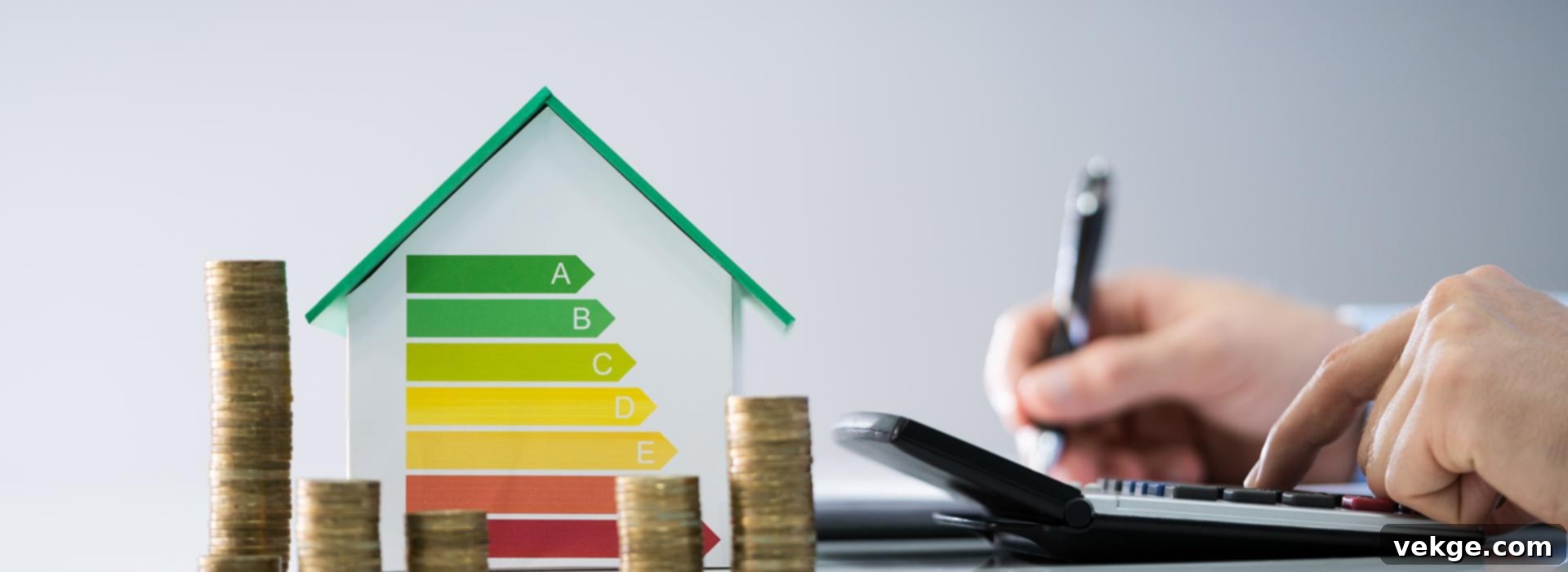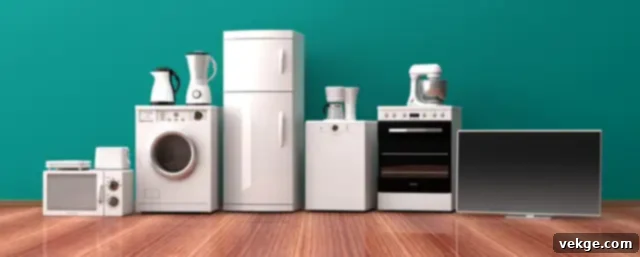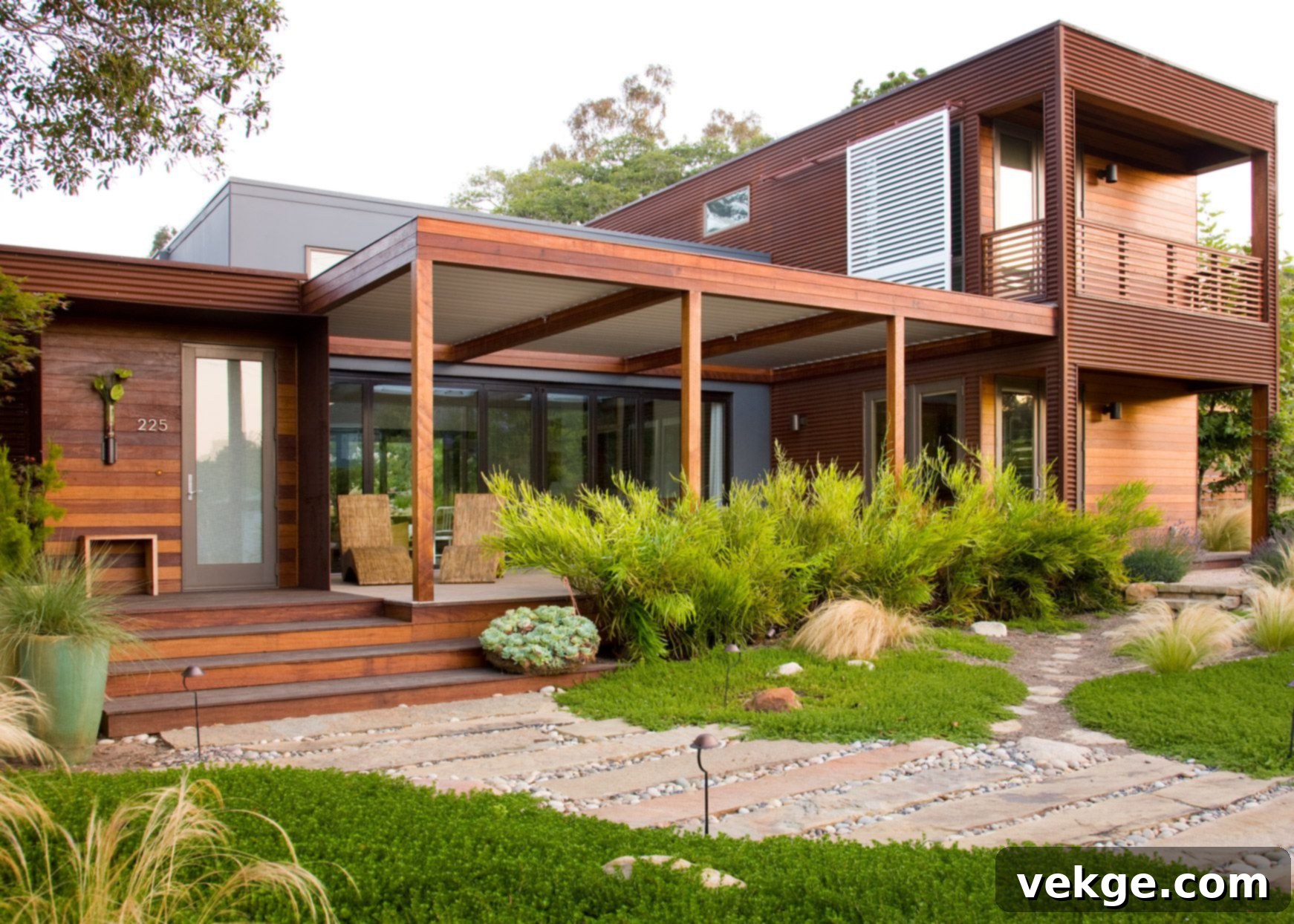Transform Your Home into an Eco-Friendly Haven: A Complete Guide to Sustainable Living
Embracing an eco-friendly lifestyle has swiftly moved from a niche interest to a global imperative. Households worldwide are increasingly prioritizing sustainable practices, driven by a collective desire to lessen their environmental footprint and secure a healthier future for generations to come. Adopting green initiatives within your home not only makes a significant contribution to the planet’s well-being but also delivers tangible benefits directly to you, such as noticeably reduced energy bills, cleaner indoor air, and an overall enhanced sense of well-being.
This widespread shift towards sustainability transcends fleeting trends; it represents a fundamental rethinking of how we live, respecting our intricate relationship with the environment and actively seeking to minimize our ecological impact. It’s about making conscious choices that support both personal health and planetary health, creating a harmonious balance in our daily lives.
The prospect of making your home entirely eco-friendly might initially appear overwhelming, yet it’s important to remember that even the smallest adjustments can accumulate into profound benefits over time. Every single step, from simply switching to energy-efficient lighting to diligently sorting your recycling, plays a vital role in fostering a healthier, more sustainable home environment and contributing to a greener planet.
As you delve into the myriad of ways to transform your living space into a more environmentally responsible sanctuary, recognize that your dedicated efforts contribute not only to a larger, critical global cause but also significantly elevate the quality of your daily life. This comprehensive guide serves as your essential starting point, offering practical, accessible, and actionable strategies to make a tangible positive impact, one step at a time.
Optimizing Your Home’s Energy Efficiency: The Foundation of Green Living
Enhancing your home’s energy efficiency is arguably the most straightforward yet profoundly impactful method to reduce your environmental footprint and substantially cut down on monthly utility bills. At the core of this effort is superior insulation, which acts as a crucial barrier, preventing unwanted heat loss during colder months and heat gain during warmer ones. By meticulously insulating your walls, attic, basement, and floors, you can maintain a remarkably consistent indoor temperature, drastically reducing the energy demand for both heating and cooling systems. This not only makes your home considerably more comfortable throughout the year but also leads to significant energy conservation and cost savings.

Complementing your insulation efforts, upgrading to energy-efficient windows is another critical step. Older, single-pane windows are notorious for being weak points where heat readily escapes or enters. Modern, high-performance windows feature double or even triple glazing, often incorporating low-emissivity (low-E) coatings and inert gas fillings (like argon or krypton) between the panes. These advanced features work synergistically to minimize heat transfer through the glass, further reducing the need for artificial heating and cooling. The result is considerable energy conservation, a smaller carbon footprint, and a more comfortable living space. While the initial investment in these home improvements can be substantial, the long-term financial savings, enhanced comfort, and undeniable environmental benefits unequivocally make them a worthwhile endeavor. Consider also sealing any air leaks around windows and doors with weatherstripping and caulk, a low-cost measure with immediate returns. Installing a smart thermostat can also automate your home’s temperature control, learning your habits and optimizing energy use without manual adjustments.
Harnessing the Sun’s Power: Integrating Solar Energy at Home
Solar power stands at the forefront of renewable energy solutions, offering an exceptionally clean, abundant, and virtually limitless source of electricity. By integrating solar panels into your home, you can dramatically reduce your reliance on conventional fossil fuels, making a profound statement about your commitment to sustainability. Rooftop solar photovoltaic (PV) systems are designed to capture sunlight and efficiently convert it into usable electricity for your entire household. This directly translates into significantly lower electricity bills and a substantial reduction in your carbon dioxide emissions, actively contributing to a cleaner, healthier global environment.
While the initial cost of installing a solar power system might seem considerable, the landscape of solar technology has evolved rapidly. Various government incentives, including federal tax credits, state rebates, and local programs, alongside the continuous decrease in solar panel prices over recent years, have made solar energy more accessible and financially viable for homeowners than ever before. Many jurisdictions also offer “net metering” programs, which allow you to sell any excess electricity your panels generate back to the grid. This not only provides additional financial savings but also contributes to your community’s overall energy needs in a truly sustainable manner. Beyond electricity generation, solar thermal systems can also be used to heat water for your home, offering another layer of energy independence. As solar technology continues to advance, becoming ever more efficient, durable, and aesthetically integrated, it presents an increasingly attractive and responsible option for homeowners eager to make a significant eco-friendly upgrade and invest in a brighter, greener future.
A Comprehensive Guide to Greener, Eco-Friendly Home Appliances
One of the most accessible and effective ways to elevate your home’s sustainability profile is by making informed choices when purchasing appliances. Eco-friendly appliances are specifically engineered to consume minimal electricity and water, translating directly into lower utility bills and a significant reduction in your home’s overall environmental impact. Today, whether you’re looking for a refrigerator, washing machine, dishwasher, or oven, manufacturers offer an expansive array of energy-efficient models that not only meet but often surpass the performance of their conventional counterparts.

When shopping, look for the ENERGY STAR label, an international standard for energy-efficient consumer products. This certification indicates that an appliance meets strict energy efficiency guidelines set by the U.S. Environmental Protection Agency. For washing machines, consider front-loading models, which typically use less water and energy than traditional top-loaders. Tankless water heaters are another excellent option, heating water only when needed, thus avoiding standby energy losses common with conventional tanks.
However, incorporating eco-friendly appliances into your home isn’t solely about the initial purchase. Proper maintenance and diligent usage are equally crucial in maximizing their efficiency and lifespan. Regular cleaning, adhering strictly to the manufacturer’s instructions, and operating appliances at their full capacity (e.g., full loads for dishwashers and washing machines) can further reduce your energy and water consumption. Timely maintenance is key to keeping all your appliances operating at peak efficiency. At McCombs Supply Co. Inc., you can discover a vast range of spare parts for the latest energy-efficient appliances, helping you sustain your home’s green operations for years to come. By making these smart, sustainable choices, you not only enjoy the benefits of cutting-edge home technology but also actively contribute to a healthier, more sustainable planet.
Sustainable Flooring Options: Beauty, Durability, and Environmental Responsibility
When planning eco-friendly upgrades for your home, it’s easy to overlook the significant environmental impact of your flooring choices. Yet, selecting sustainable flooring materials is a powerful way to reduce your ecological footprint while enhancing your home’s aesthetic and comfort. Bamboo and cork are two increasingly popular options that beautifully combine durability, natural beauty, and exceptional environmental benefits.
Bamboo flooring, derived from a remarkably fast-growing and highly renewable grass, offers the strength, resilience, and sophisticated aesthetics often associated with traditional hardwoods, but without the same long-term ecological footprint. Unlike slow-growing trees, bamboo replenishes itself rapidly after harvesting, making it an outstanding choice for those dedicated to reducing their impact on the world’s precious forests. It’s also known for its durability and resistance to insects.
Cork flooring, harvested from the bark of cork oak trees, presents another uniquely sustainable option. Crucially, the tree itself is not harmed during the harvesting process, as the bark regenerates over time. This material boasts a distinctive look and feel, is naturally hypoallergenic, and provides excellent thermal insulation and sound dampening properties, adding both comfort and energy efficiency to your home. Beyond bamboo and cork, other sustainable choices include recycled glass tiles, reclaimed wood from old structures, natural linoleum (made from linseed oil, pine resin, and wood flour), and even carpet made from recycled materials or natural fibers like wool.
Both bamboo and cork flooring, along with these other green alternatives, are available in a vast array of styles, colors, and finishes, allowing you to achieve the perfect design vision for your space while steadfastly adhering to eco-friendly principles. As the global demand for sustainable building materials continues to grow, manufacturers are constantly innovating, offering an ever-expanding selection of environmentally responsible choices. This empowers you with unparalleled freedom to customize your home’s design and functionality without ever compromising your deeply held environmental values.
Mastering Water Conservation Techniques for a Sustainable Home
Adopting effective water conservation techniques within your home is an absolutely vital step towards achieving a truly sustainable lifestyle. One of the simplest yet most impactful methods for outdoor use is utilizing rain barrels to collect and store rainwater. This practice significantly reduces your reliance on municipal water systems for irrigation and plays a crucial role in managing stormwater runoff, which often carries pollutants into local waterways. Installing rain barrels strategically at downspouts allows you to capture a valuable natural resource that would otherwise be lost, providing a free and readily available supply for watering gardens, lawns, and even for outdoor cleaning tasks, all while easing the strain on public water infrastructure.

Inside the home, transitioning to low-flow fixtures can dramatically cut down on water usage without any noticeable sacrifice in performance or comfort. Modern low-flow showerheads, faucets, and toilets are ingeniously designed to use water far more efficiently than older models, effectively reducing waste and lowering your water bills. For instance, low-flow showerheads can reduce water consumption from 2.5 gallons per minute (GPM) or more to just 1.8 GPM or even less, while high-efficiency toilets can use as little as 1.28 gallons per flush (GPF) compared to the 3.5 to 5 GPF of older units. These fixtures can be easily installed as direct replacements for less efficient models, offering an immediate and substantial improvement in your home’s water conservation efforts.
Beyond fixtures, consider incorporating greywater recycling systems, which capture water from sinks and showers for landscape irrigation. Simple habits like checking for and repairing leaky faucets and toilets promptly can also save thousands of gallons annually. By actively implementing these water-saving measures, you not only contribute directly to the critical conservation of a finite and invaluable resource but also set a powerful example of responsible water stewardship within your community, inspiring others to adopt similar practices.
Creating a Sustainable Outdoor Oasis: Green Gardening and Beyond
Creating a green garden extends far beyond the mere act of planting; it’s about thoughtfully designing an entire ecosystem that actively supports local wildlife, enriches biodiversity, and conserves precious natural resources. A fantastic starting point for this endeavor is to choose native plants specifically adapted to your local climate and soil conditions. These indigenous plants naturally require significantly less water, fewer fertilizers, and little to no pesticides compared to non-native varieties. This not only makes your garden inherently more sustainable and low-maintenance but also provides vital food sources and habitats for crucial pollinators like bees, butterflies, and local bird species, all of which are indispensable for a healthy and thriving ecosystem.

Composting stands as another fundamental cornerstone of truly green gardening. By conscientiously transforming kitchen scraps and yard waste into nutrient-rich compost, you achieve two significant goals: you dramatically reduce the volume of organic waste sent to landfills, and you simultaneously create a rich, natural, and incredibly effective fertilizer for your garden. This practice minimizes the need for synthetic chemical fertilizers, which can be detrimental to soil health and local waterways. Composting also actively encourages the proliferation of beneficial soil organisms, fostering a robust microbial environment that helps plants grow healthier and stronger naturally. Consider various composting methods, from simple backyard piles to enclosed bins or even vermicomposting with worms, to find what works best for your space.
Further enhancing your sustainable outdoor space can involve implementing xeriscaping principles, which focus on drought-tolerant landscaping to minimize water use. Installing drip irrigation systems can deliver water directly to plant roots, significantly reducing evaporation and waste. Opting for permeable paving materials for patios and pathways can help manage stormwater runoff and allow rainwater to slowly soak into the ground, replenishing local aquifers. By meticulously incorporating these thoughtful practices into your gardening and landscaping efforts, you not only amplify the beauty and productivity of your outdoor areas but also ensure that your exterior activities are perfectly aligned with your deep-seated eco-friendly values, making your entire property a testament to sustainable living.
Ultimately, embracing eco-friendly practices throughout your home is far more than simply acknowledging a passing trend; it represents a profound and enduring commitment to a sustainable lifestyle. This commitment yields invaluable benefits for both your immediate family and the health of our precious planet. Your dedicated journey towards cultivating a more sustainable household will undoubtedly enhance your quality of life, offering a healthier, more resource-efficient, and cost-effective living environment. Moreover, by making these conscious choices, you actively set a powerful positive example for your community, inspiring others and paving the way for a greener, more resilient, and truly sustainable future for everyone. Begin your transformation today, and become a part of the solution.
